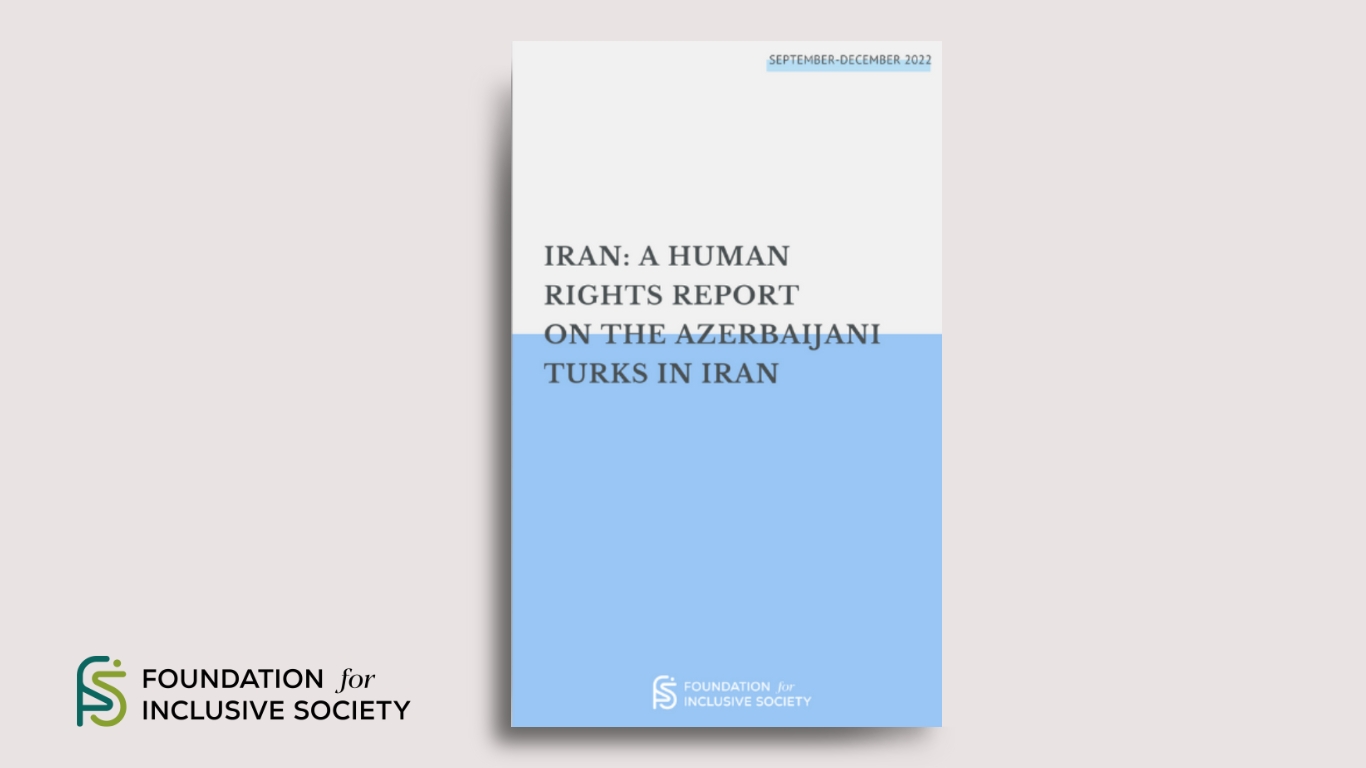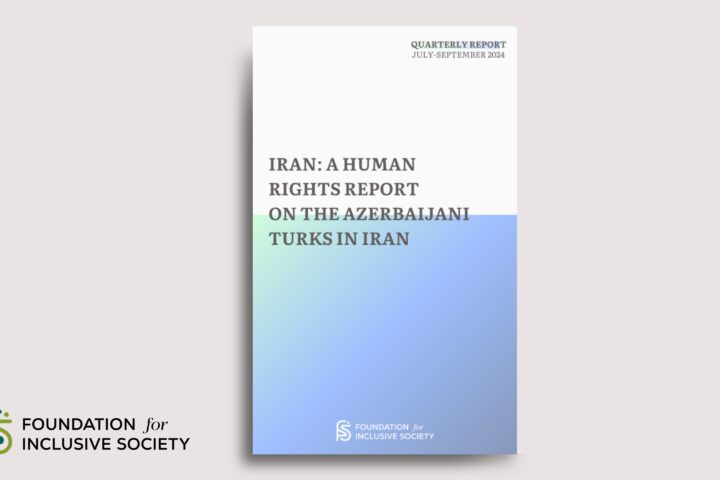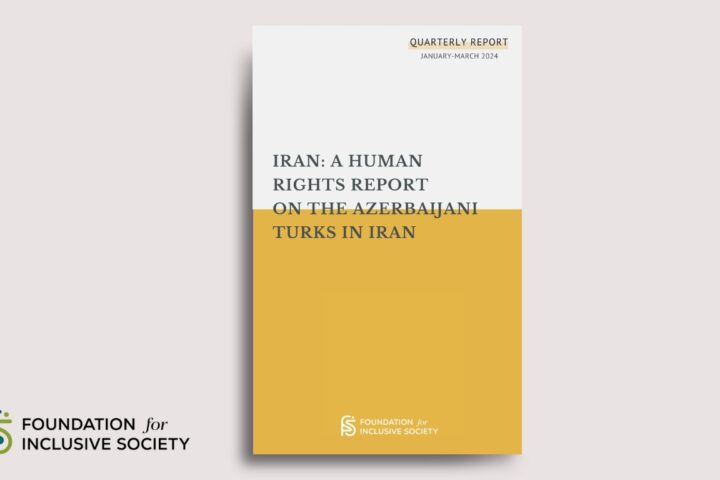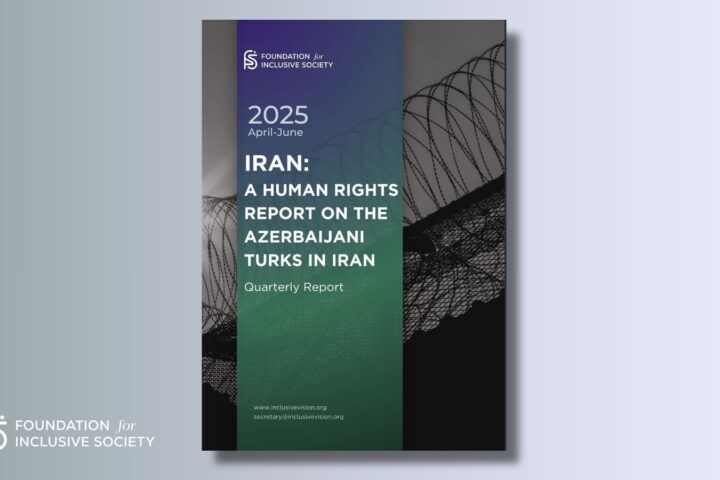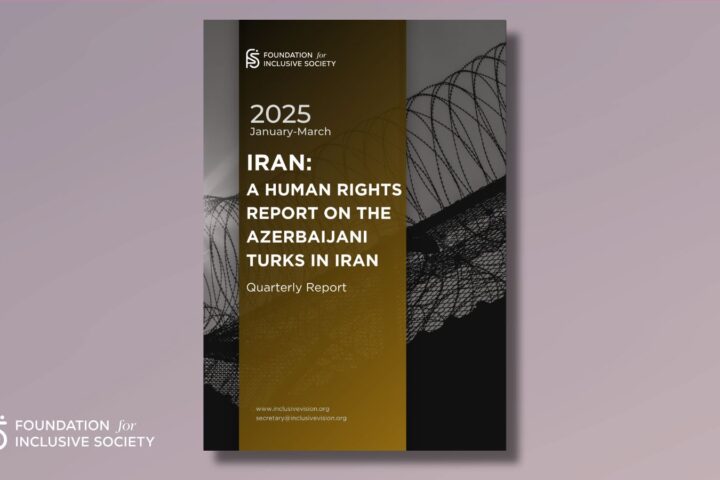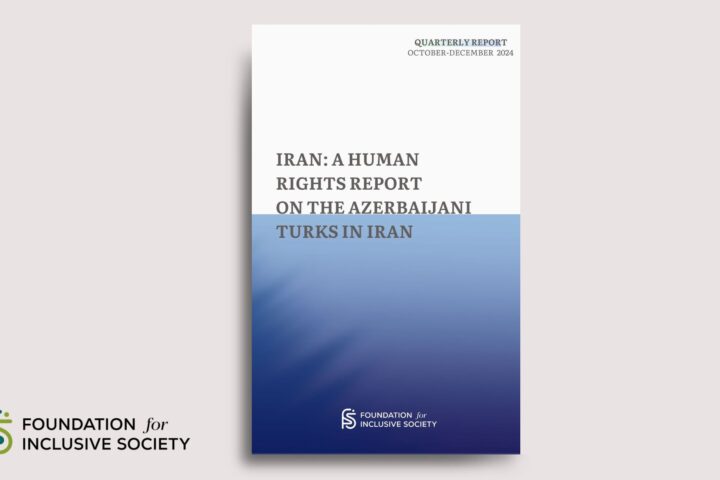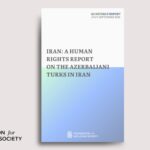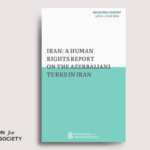Iran Protests 2022: Updates on Human Rights Report on the Azerbaijani Turks in Iran
September- December 2022
Click here to download and read the report
Summary
This report has been prepared by a group of Azerbaijani human rights defenders regarding the latest status of the human rights violations of the Azerbaijani Turks in Iran by examining the 2022 Iran protests. The Azerbaijani Turks are Iran’s most significant ethnic minority group. They primarily reside in the West Azerbaijan, East Azerbaijan, Ardabil, and Zanjan provinces in İran. These first three provinces share borders with Turkey and the Republic of Azerbaijan. Azerbaijani Turks are also mainly populated in Gilan, Qazvin, Hamadan, Alborz, Kurdistan, and Tehran provinces in Iran.
Giving an estimate about the population count of the Azerbaijani Turks in Iran is very challenging as the Iranian government has never released any official demographic statistics for the ethnic and linguistic groups. However, during his official visit to Turkey in January of 2011, former Iranian Foreign Minister Ali Akbar Salehi declared that forty percent of Iranians speak Turkish:
“We speak almost the same language. Forty percent of Iranians speak Turkish. This is a big link between Turkey and Iran.”
The Azerbaijani Turks, alongside their ethnic relatives such as Turkmens, Qashgais, and other Turkic groups often claim a population share of more than 40%. After the rise of the Pahlavi dynasty to power in Iran in 1925, the government pursued forced assimilation policies. This led to a decline in Azerbaijani influence in the country’s government and politics significantly.
The Islamic regime, like the previous monarchy in Iran, has downplayed and willfully ignored the differences between Persians and Azerbaijanis. The Islamic regime did not hesitate to crack down on the Azerbaijani Turk protestors throughout its history, using heavy weapons to crush uprisings such as the protests in Tabriz in 1981 that led to the massacre of hundreds of Azerbaijanis.
This is applicable to the current protests in Iran as well. Many civilians have been arrested, sentenced to capital punishment, and even killed on the streets by the Iranian security forces. However, considering the preexisting systemic discrimination and racism against the Azerbaijani Turks, the human rights violations against Azerbaijanis have been either ignored or lost through the cracks. The aim of this report is to close the gaps that exist in reporting of these human rights violations by the Islamic Republic of Iran. This report provides an update on the situation of the Azerbaijani Turk protestors who have been arrested, murdered people, and executed by the Iranian regime’s forces. The first edition of this report focused on the protests and human right violations from September and October of 2022. This report is the second edition and focuses on the months of November and December of 2022.
The first part of this report presents a brief overview of the latest protests. The second part of this report mainly concentrates on the report’s authors and sources that have been used as a reference in preparation. The third part of this report explains the methodology used, the data collection process, and the formation of the framework.
Like other regions of Iran, people in the Azerbaijani-populated provinces began holding demonstrations demanding freedom alongside their other ethnic and religious rights. Authorities started to crack down upon Azerbaijani protests immediately. According to Harana Human Rights Commission, more than 18,000 protesters have been arrested. A considerable share of these arrested protestors are ethnically Azerbaijani Turks. According to the Azerbaijani lawyer Sina Yousefi, the vice-chairman of the Human Rights Commission of the Azerbaijani Lawyers Association, “The number of referrals to colleagues’ offices and the lawyers’ association to accept the representation of those detained during the protests was very high. Therefore, they decided to form a “defense committee” in the Human Rights Commission. The number of detainees in Tabriz was more than 1700 protestors in the first two weeks of the protests alone.”
We were able to confirm the identity of only 24 protestors who were killed as a result of direct shooting, physical abuse, or torture by the various security forces and/or executed by the courts of the Islamic Republic of Iran.
Part A focuses on murdered individuals and we discuss the murder of 24 people by the repressive regime of Iran. We divided this part of the report into two sections. These sections are murdered women & children and other murdered protestors. The first part is in regards to the 13 out of 24 killed people who were children and women. They were killed in a cruel and merciless manner. The second section focuses on the other 10 killed individuals.
Part B is dedicated to the executed individuals by the unjust legal system in Iran. We will specifically focus on the case of a victim named Milad Ashrafi who was executed arbitrarily by the judicial actors. This part also includes 6 other victims who are unfairly sentenced to capital punishment.
In part C, we will examine the cases of 6 Azerbaijani Lawyers who were arrested and sentenced. Most of these lawyers were sentenced to imprisonment as well as a travel ban prohibiting them from exiting the country.
Part D will explore 23 protestors who were arrested by the Iranian security forces. They have been sentenced to various punishments.
Part E will analyze 12 individuals summoned by the ministry of intelligence and provide details on their cases.
In part F, we will talk about arrested people. Throughout the months of September and October, 110 people were arrested. Additionally, 121 other people were arrested in the months of November and December. Most of these individuals were arrested during the uprisings while a few were arrested in the aftermath of these protests.
In part G, we will focus on the cases of 3 people who were suspended from working and studying as a form of punishment.
Part H will review the status of released individuals who were arrested throughout the protests.


